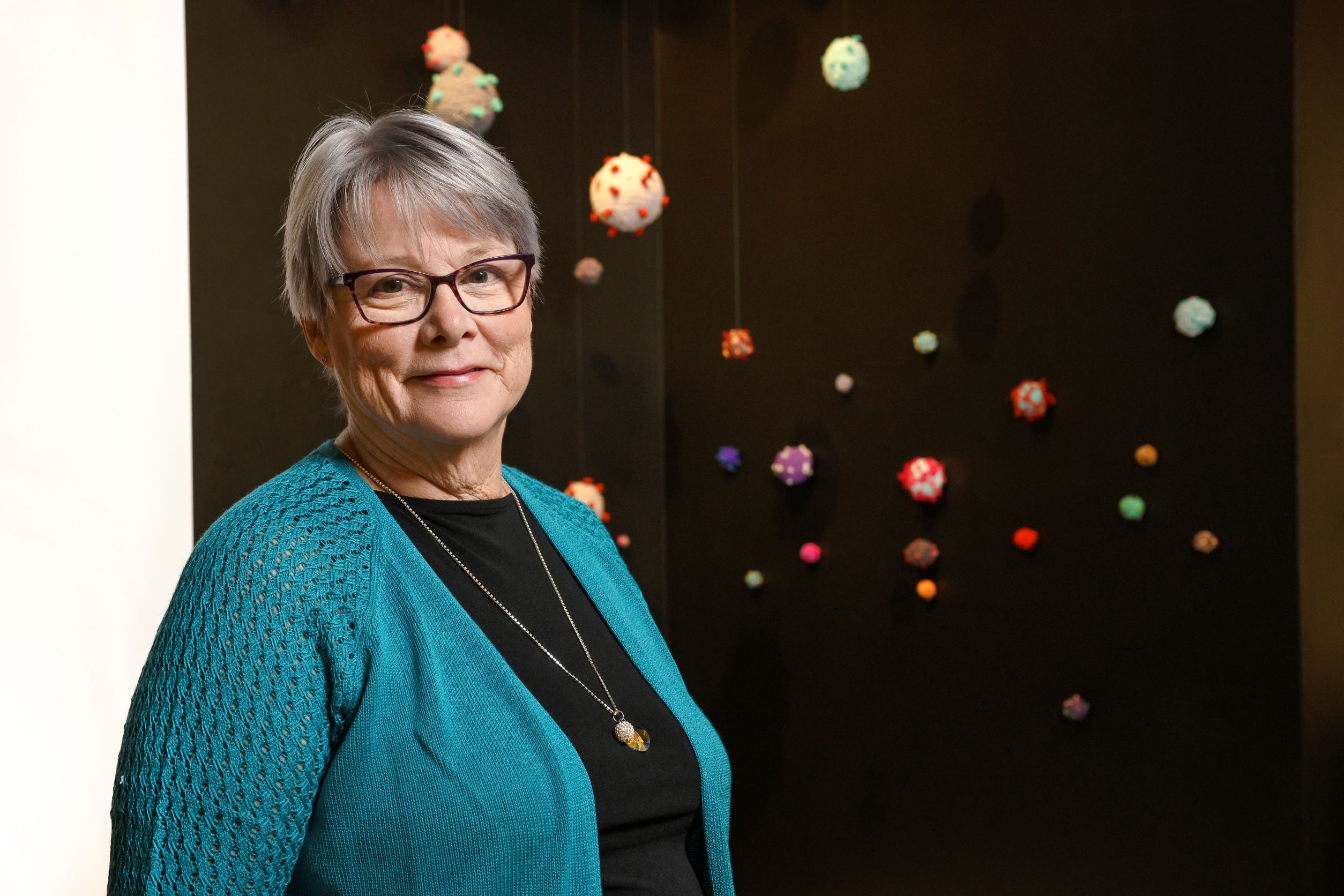Faculty Member Contributes to Revolutionary Art Exhibit
By Meghan Haukaas

The Things We Think With was an exhibit at the Fifth Parallel gallery on campus, which explored the objects and items that are integral aspects of our everyday lives, and why they hold meaning for us.
People from all corners of the university participated, including a library archivist, scientist, mathematician, musician, dancer and a registered nurse (RN) -- to name a few. The RN, Dr. Laurie Clune, an associate professor in the faculty, said she participated in art exhibits during a sabbatical a few years back, and jumped at the opportunity to use that experience in this exhibit. It was an opportunity to speak to the work she and her colleagues have dedicated their lives to performing and now teach.
Clune used fibres to create germs for this particular exhibit. In reflecting on her decision to use this form of representation, Clune said, “People often call nurses heroes – especially during the pandemic. Nurses work with germs like these on a regular basis, so this is representative of the dangers they face every single day.”
Clune also praised the rest of the participants saying the exhibit, “really showed the creativity of our staff at the University of Regina in every faculty.” One display featured animal bones to show methods of interactively teaching anatomy, while another gathered clothing from the local Value Village and had them made into art pieces telling the story of who might wear them.
All these exhibits shared a common goal: to show us what we use to learn and how we associate those items in our everyday lives. Clune said her contribution was not exclusively “artistic” but more creative. “It’s just a different way of disseminating information,” she said, “For me it’s a new way of doing research.”
Clune said a colleague encouraged her to participate, but she was reluctant at first. “It was the scariest thing I have ever done in my academic career,” she said. The concern stemmed from rigid practices where she thought change might be resisted.
Despite her reluctance, Clune moved forward with these ideas, even taking them back to her own classroom. Rather than having her students write a paper, she assigned art as an alternative. “Many of my students are working on powerful pieces and they love doing it, which is just incredible,” she said.
These expressions are blurring the line between art and science. “I think it’s a new way of doing things. We’ve done a lot to explore the scientific aspects of the profession, now we can do even more to highlight the art of nursing.”